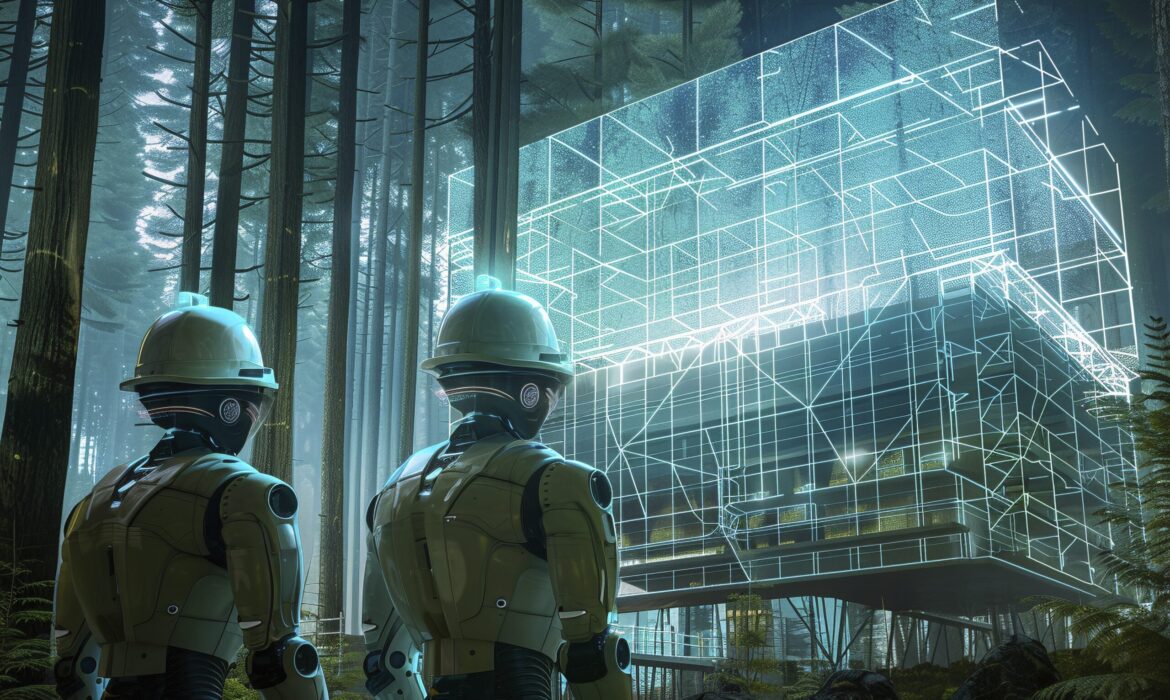
Over the past few years, there has been a significant buzz on Artificial Intelligence (AI) within the construction industry, which has transformed age old practices that enhance efficiency and productivity.
Be it predictive maintenance or resource management and optimization among others, Artificial Intelligence is reshaping various aspects of construction.
In this paper we will look at five major development cases where AI is shifting building practice significantly. It will also outline possible cost savings, sustainability benefits and implementation challenges as well as providing examples from actual situations that help predict how AI can possibly go in future within this sector.
Come along with us in this illuminating journey to reveal how AI has profoundly affected the construction field.
1. Predictive Maintenance
Predictive maintenance refers to an approach that employs information analytics and machine learning techniques to song construction equipment, expect potential breakdowns, and agenda well timed maintenance operations geared toward optimizing running efficiency and decreasing downtime in construction sports.
Utilizing predictive analysis coupled with monitoring tools for machinery used in construction enables contractors to avoid unscheduled downtimes.
These latest methods offer crucial findings through analysis of data patterns and trends about equipment operation. These operators are empowered by the ability to analyze such huge datasets for more solid decisions on maintenance scheduling and resource allocation.
Machine learning algorithms are used in analyzing historical data to predict future occurrence of equipment failures. Maintenance teams can use these predictive models to take proactive measures towards preventing breakdowns and ensuring life expectancy of machinery assets.
2. Construction Planning and Scheduling
In order to complete projects successfully in the construction sector, good construction planning and scheduling must be employed as main factors for optimizing project timelines, resources, and workflow. The careful planning and scheduling of different phases that a project may go through is important for reducing any possible delays, overspending or conflicts during the execution phase.
By using optimization techniques together with project management software tools; construction teams can allocate resources efficiently, manage dependencies, and track progress in real-time. Note also that tools for AI construction estimating are available today that have made it possible to budget differently or plan projects differently.
AI tools are capable of analyzing large amounts of data, industry trends and actual project details for more accurate cost predictions and reduction in estimation errors.
They act like central platform enabling stakeholders to communicate effectively while at the same time making informed choices on how best can they deal with hazards that may arise during the construction process.
Planning meticulously and sticking to the timelines contributes to increased productivity, reduced wastage, attainment of project milestones within set deadlines hence underlining the significance of systematic planning and scheduling in construction projects.
3. Quality Control and Safety Monitoring
Construction sites enforce safety protocols and enhance on-site safety through real-time monitoring and construction data that ensure compliance with regulatory standards.
In construction projects, adopting technology-driven safety protocols is critical to risk mitigation as well as work quality preservation. Real-time monitoring systems such as wearable devices or drones enable managers to track employees’ movements, detect hazards immediately, and address any safety issues timely.
For instance, sensors that are integrated into construction machinery can reveal data about use patterns and maintenance requirements which in turn prevent equipment failures that may be a danger to safety. This way, construction companies would stay ahead of safety issues and maintain high quality standards throughout the life of the project.
4. Resource Management and Optimization
Effective resource control and optimization is important for minimizing project costs, improving project efficiency and ensuring the optimal utilization of construction workers as well as building materials.
Hence, there are various ways to effectively manage resources in construction projects. In this case, these include resource leveling mechanisms for labor and material where there will be no shortages or surpluses. Project managers can employ various tools such as; building information modeling (BIM) software and others that enable them allocate resources precisely. Incorporating optimization methods such as lean concepts of construction or just-in-time delivery leads to cost savings and shortened production periods.
Data insights are instrumental in useful resource control as they offer real-time statistics on useful resource usage, permitting venture managers to directly make knowledgeable choices.
5. Design and Building Information Modeling (BIM)
The integration of Design and Building Information Modeling (BIM) is transforming the development area via the supply of modern-day 3-D modeling, virtual dual era, and enriched visualization for extra precise and green constructing design.
Through the software of BIM, creation experts can generate complex digital representations of the whole constructing technique, facilitating stepped forward coordination among diverse teams and stakeholders. This not only results in enhanced accuracy in design and planning but also optimizes the construction process and user experience, thereby reducing errors and minimizing the need for rework. The utilization of 3D modeling and digital twin technology further bolsters project outcomes by furnishing a realistic depiction of the building’s operational functionality post-completion, facilitating early detection of potential issues and enabling proactive resolutions.



